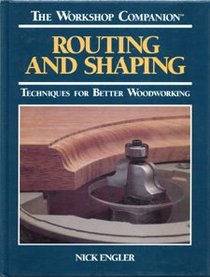Search -
Routing and Shaping: Techniques for Better Woodworking
Routing and Shaping Techniques for Better Woodworking
Author:
Do more with your router and shaper! Your router is, perhaps, the most versatile tool in your shop. You can rout not only decorative shapes but also woodworking joints. For example, did you know that you can cut biscuit joints with your router? Or make perfect circles? Or joint the edges of boards s... more »
Author:
Do more with your router and shaper! Your router is, perhaps, the most versatile tool in your shop. You can rout not only decorative shapes but also woodworking joints. For example, did you know that you can cut biscuit joints with your router? Or make perfect circles? Or joint the edges of boards s... more »
ISBN-13: 9780875961071
ISBN-10: 087596107X
Publication Date: 5/1992
Pages: 124
Rating: 6
ISBN-10: 087596107X
Publication Date: 5/1992
Pages: 124
Rating: 6
3.7 stars, based on 6 ratings
Genres:
- Crafts, Hobbies & Home >> Crafts & Hobbies >> Woodworking >> General
- Crafts, Hobbies & Home >> Crafts & Hobbies >> Woodworking >> Tools




